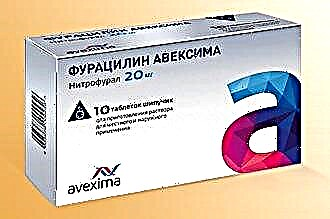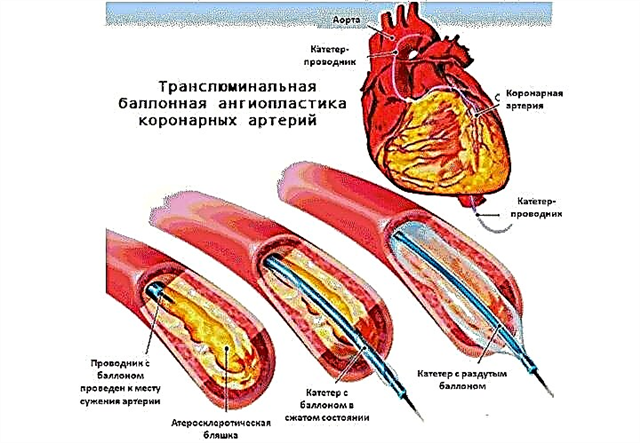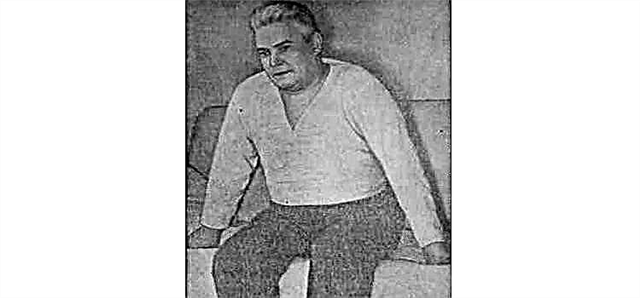Rinsing the nose with sinusitis is an integral part of the treatment of maxillary sinusitis. With difficulty in nasal breathing and an inflammatory process accompanied by mucous secretions, it is the method of moving fluids that gives a good result. Washing the maxillary sinuses, which is carried out in the early stages of the disease, often helps the patient to avoid such an unpleasant procedure as a puncture (puncture). Irrigation can be done both in the hospital and at home.
Indications and contraindications for irrigation therapy
 Cleansing the nasal cavity with fluids for sinusitis is prescribed if there are such prerequisites:
Cleansing the nasal cavity with fluids for sinusitis is prescribed if there are such prerequisites:
- sinusitis in acute and chronic forms;
- rhinosinusitis;
- cold;
- drying out of the epithelial layer of the mucous membranes;
- allergic rhinitis, often turning into the same sinusitis;
- recovery after surgery (mandatory procedure);
- prevention of upper respiratory tract diseases.
There are practically no side effects and contraindications for the procedure, however, you should pay attention to some points:
- It is absolutely impossible to rinse the sinuses with an unboiled or non-sterile solution, since a large number of microbes can get into the accessory pockets, which can result in harm outweighing the benefit.
- In the presence of severe curvature of the nasal septum or overgrown polyps, the circulation of fluid in the nasal cavity is difficult, therefore, the effectiveness of irrigation is low.
- When carrying out the procedure at home, you do not need to create a strong water pressure, since it, together with an infection, can enter the auditory tube and cause otitis media (inflammation of the middle ear), this is especially dangerous for children whose Eustachian tubes are wide and short (no more than 2 cm) ... Only a doctor should determine the need for rinsing in preschoolers, and it is better to carry them out in a polyclinic.
Hospital flushing methods
For optimal results, you need to know how to properly rinse your nose with sinusitis. In ENT departments, several different methods are used, each of them has its own advantages and disadvantages, however, they are effective in the main thing - cleansing the air cavities from mucous accumulations.
Method "Cuckoo" (moving liquid according to Proetz). An inexpensive and effective procedure, it can often replace a puncture. Its essence lies in creating a pressure difference, which becomes a condition for the free circulation of water in the sinuses. In short, the method looks like this:
- Before rinsing the nose (for 10-15 minutes), vasoconstrictor drops are instilled into the patient to relieve edema, which reduces the patency of the nasal cavity.
- The patient sits comfortably and tilts his head back slightly.
- A liquid is supplied into one nostril with a syringe with a soft stream, without strong pressure, as a rule, it is a mixture of water and an antiseptic (Miramistin, Furacilin).
- From the other nostril, the liquid, together with purulent exudate, is aspirated with a special aspirator or ENT combine.
- To push the antiseptic into the sinus, the doctor squeezes the nostril through which water enters for a few seconds, and then abruptly releases it. The pressure allows the cavity to drain.
- Throughout the procedure, the patient repeats "cuckoo", which raises the soft palate and blocks the passage of the infected fluid into the pharynx and mouth.
This technique is not used with a tendency to nosebleeds and epilepsy, it is prescribed with caution to pregnant women and children under 6 years of age.
Usually, the "cuckoo" does not cause serious painful sensations, but sometimes sneezing, redness of the eyes, a slight burning sensation, and a feeling of fullness in the nose may appear. Occasionally, bleeding and vomiting are possible in children. All manipulations should be carried out by an experienced otolaryngologist in order to avoid the development of otitis media or tissue damage in the nasal cavity.
Yamik procedure. Developed in the mid-1970s in Yaroslavl by Dr. Kozlov and recognized in many countries around the world. For irrigation, a specially designed unique Yamik sinus catheter is used, which is able to treat all paranasal sinuses simultaneously using the vacuum principle. The catheter consists of:
- a housing including a latex rear balloon secured to a flexible metal tube;
- cuffs with a front balloon, valve and working channel with an adapter for connecting a syringe.
Flushing with a sinus catheter is performed as follows:
- The nasal cavity of a sitting patient is anesthetized with a spray of lidocaine or novocaine. Turundas with adrenaline are invested in the moves to open up the anastomoses and relieve puffiness.
- Along the lower part of the canal, a curved tube is inserted into the nose individually for the patient. The posterior balloon is inflated and the nasal cavity is separated from the pharynx. Then the front balloon is inflated in the nasal passage, as a result of which the space is isolated on both sides.
- Air is sucked off with a syringe, a vacuum is created. Because of this, the fistulas open, the exudate flows out of the sinuses and enters the syringe. The action is repeated until the entire secret is evacuated.
- Then drugs (antibiotics, antiseptics and mucolytics) are poured through the adapter, while the patient tilts his head to one side. Thanks to the newly created vacuum, the medicine enters the accessory pocket without hindrance.
- After that, the rear and front balloons are successively deflated, the structure is removed from the nose.
The entire manipulation lasts no more than 15 minutes. It is very effective and accelerates the healing process. However, small children and the elderly do not tolerate it well, therefore, they, as well as people with polyposis, bleeding, epilepsy and deformities of the nasal septum, are not prescribed the Yamik procedure.
Home rinsing
At the initial stage of the disease, removing snot can prevent the purulent development of the disease, so you need to know how to flush the nasal cavity for yourself and your child.
You can use a 10-20 ml syringe without a needle for infusion of solutions, a small syringe or a special teapot for irrigation "jala-neti".
- The patient stands or sits, bending over a bowl or sink, the head is lowered down and turned to the side.
- Irrigation fluid is smoothly poured into the previously cleaned passages. Water should be supplied to the higher nostril and flow freely from the lower one. You can hold your breath or breathe through your mouth.
- To prevent water from getting into the throat or into the mouth, it is enough to quietly say "and-and-and" during the entire procedure, while the soft palate will rise and separate the nasopharynx from the mouth and throat.
- After finishing, you need to let the solution drain, sitting with your head down, and then blow your nose.
Saline solutions, their benefits and types
There is a wide range of products used for rinsing the nose with sinusitis. To obtain the desired result, it is better to consult with an experienced otolaryngologist and not delay the beginning of the procedure. Practice shows that the treatment of sinusitis by washing is possible only at the beginning of the development of the disease. There is no safer way to clear the maxillary sinuses, while rinsing replaces the appointment of corticosteroids. At later stages, after the addition of a bacterial infection and the appearance of purulent contents in the sinuses, irrigation becomes an auxiliary measure in antibiotic therapy.
The main means by which rinsing the nose with sinusitis is the usual 0.9% saline solution.According to its characteristics and the level of osmotic pressure, it is very close to the natural fluids of the human body, therefore in medicine it is called a physiological or isotonic solution. This liquid is absolutely harmless and can be used without a prescription for all categories of patients for as long as desired, including for prophylactic purposes.
Infants are advised to irrigate the nose using a hypotonic solution with a lower salt concentration, such as Saline (0.65%). If the swelling of the nasopharynx is very pronounced and the accumulation of pus and mucus is large, then with such sinusitis, rinsing of the nose is carried out with a more saline hypertonic solution (1.9 - 2.3%), which, due to the higher osmotic pressure, removes water from the cells of the body. It is produced in the form of ready-made irrigation products, such as Humer, Aqualor Forte, Aqua Maris Strong.
Nasal Irrigation Products
Among the medications that can be used to rinse the nose with sinusitis, antiseptics are considered the most common:
- Furacilin. A cheap but effective product sold in the form of tablets or ready-made solution. You can prepare a liquid for irrigation yourself by dissolving one tablet of furacilin in a glass of warm boiled water. The resulting yellow liquid
 wash the nasal cavity three times a day, it helps to remove mucus clots and fights microorganisms.
wash the nasal cavity three times a day, it helps to remove mucus clots and fights microorganisms. - Chlorhexidine. It is active against gram-positive bacteria (streptococci and staphylococci) and viruses, therefore it is used in the acute form of bacterial and viral sinusitis. There are different types of chlorhexidine available in pharmacies. You can rinse your nose with sinusitis with a 0.05% antiseptic solution without diluting it with water, 15 ml of the product is enough for one cavity. Repeat a week 1-2 times a day.
- Miramistin. It has a destructive effect on the cell membranes of bacteria, suppresses fungi and viruses, while it is not absorbed into the blood. In 0.01% form, it is used in medical institutions during the Yamik-therapy, "cuckoo" procedures, as well as during a puncture and in the postoperative period.
- Dioxidine. Strong antiseptic, counteracts both cocci and gram-negative microflora. For sinusitis, use a 1% solution of dioxidine, 25 ml per accessory pocket, but not more than 70 ml per day. Used in hospitals, manipulations are carried out under the supervision of a doctor. It has a number of contraindications, especially for the kidneys. It is not used in the treatment of pregnant women and children under 12 years of age.
Often, patients doubt whether it is possible to make a liquid using conventional drugs from a home medicine cabinet. There are some good recipes:
- Iodine. The drug is of natural origin, has a pronounced antimicrobial effect. Add 1-2 drops of iodine to the saline solution and stir. There are contraindications: small children, pregnant women, patients with furunculosis, pyoderma, tuberculosis, nephritis.
- Potassium permanganate. Its action is similar to iodine. In warm water, several crystals of potassium permanganate are diluted to a faint pink color. Rinse 2 times a day.
Folk recipes give their recommendations on how to remove pus from the maxillary sinuses. They are based on the healing effect of natural ingredients:
- Propolis. To prepare a liquid for irrigation, use 10% or 20% alcohol tincture, which is added to the saline solution in 10-15 drops. It has an analgesic effect, removes toxins, relieves inflammation, strengthens the walls of blood vessels.
- Decoctions of medicinal herbs. For irrigation, decoctions of such plants as chamomile, celandine, sage, St. John's wort, oak bark, plantain, etc. are used. They can be used separately or combined in any combination, preparing healing collections. To prepare the infusion, you need to brew a tablespoon of chopped dry herb with a glass of boiling water, leave for half an hour and strain through cheesecloth or a sieve. Carry out 2-3 single rinses every day for a week.
- Berry and vegetable juices. Freshly squeezed juices of onions, cranberries, carrots, beets, black currants are mixed with warm boiled water (1: 3). After irrigation, rinse with plain water to remove plaque on the mucous membrane.
- Herbal pharmaceutical preparations. Alcoholic and aqueous-alcoholic infusions of medicinal herbs and minerals (Rotokan, Malavit) or brewing powders (Elekasol) are widely used.

 wash the nasal cavity three times a day, it helps to remove mucus clots and fights microorganisms.
wash the nasal cavity three times a day, it helps to remove mucus clots and fights microorganisms.

